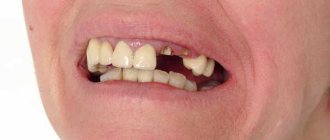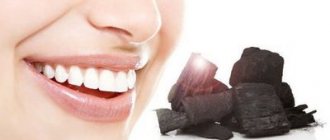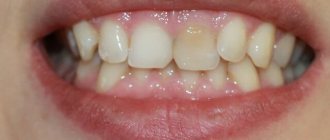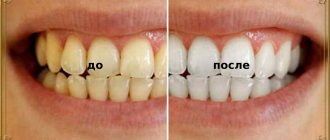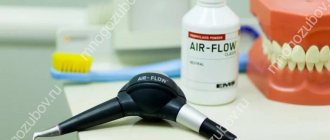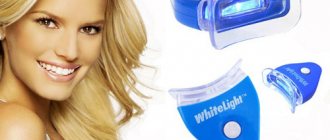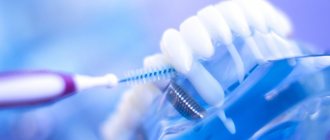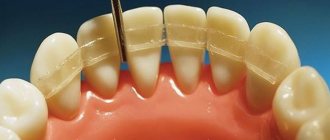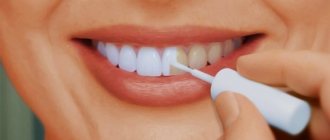2420
Most people want to have beautiful white teeth. However, not everyone has the opportunity or desire to periodically visit a dental clinic for a whitening procedure.
And some even believe that it is worth trying home techniques first before using the services of a professional.
One of the most famous ways to whiten enamel with home remedies is lemon .
There are many recipes that tell you exactly how to use this fruit to lighten your teeth enamel. In this article we will take a detailed look at not only possible techniques and recipes, but also talk about their positive and negative sides.
Pros and cons of the procedure
Like most home whitening techniques, using lemon for this purpose has its positive and negative sides.
Advantages:
- An important advantage of the technique is its accessibility and low cost , even compared to other home whitening products.
- Effectively whitens tooth enamel , giving it a lighter shade.
- During the procedure, the mucous membranes of the oral cavity are also disinfected , which gets rid of germs and helps prevent caries.
- The use of this fruit improves immunity (including local immunity).
- Gives fresh breath without the use of artificial mouthwashes.
- Lemon juice helps reduce toothache .
The vast majority of people can use this whitening product, which makes it universal. The exception is patients who are allergic to this fruit.
Flaws:
The method has practically no disadvantages. One has only to say that the acid in lemon juice can have a negative effect on the structure of the enamel, so it should be used very carefully .
How to use Blik pencil to whiten teeth? Features and recommendations.
In this review, read about the benefits and effectiveness of Splat black toothpaste.
Here https://www.vash-dentist.ru/krasota-i-uxod/otbelivanie/zubov-s-pomoshhyu-perekisi-vodoroda-metodiki-i-otzyivyi.html we will discuss how safe the whitening procedure using hydrogen peroxide is.
Teeth whitening with baking soda and lemon: advantages and disadvantages
Despite its simplicity, this method has advantages over others, namely:
- low financial costs;
- safety subject to precautions and contraindications;
- ease of implementation;
- the ability to use at any time (as an urgent option before an upcoming event);
- excellent results when used for the right reason.
It should also be noted the disadvantages of this type of bleaching. They are:
- Aggressive effects on tooth enamel from acids and alkalis, resulting in a decrease in the thickness of the enamel layer. It is especially dangerous if you do not follow the rules of the procedure.
- Not suitable for all cases of darkened teeth. Here it is important to clarify the reasons for the appearance of plaque.
Everyone must decide for themselves the balance of the pros and cons of this method individually.
Technique
Homemade variations on the use of lemon's teeth-lightening properties are numerous. However, they all have several common nuances . In order not to repeat ourselves in each recipe, we will talk about them separately:
- Before each procedure, as well as for some time after it, you should not eat foods containing strong dyes , for example, beets, red wine, strong tea (both black and green), coffee and others.
- Also, before starting the procedure, you should brush your teeth well using your usual brush and toothpaste.
By following these tips, you can make whitening more effective .
Foods that are harmful to the kidneys
There are many foods that you should not eat if you have kidney disease.
Meat
A diet high in protein damages the kidneys and even increases the risk of developing kidney stones or cancer.
Salt
By absorbing excess salt, the kidneys retain more water to dissolve this mineral into the bloodstream.
Artificial sweeteners
This type of product affects kidney function if consumed in excess.
Carbonated drinks
They are associated with the formation of kidney stones.
Dairy
They increase the excretion of calcium in the urine, which contributes to the development of kidney stones.
One-ingredient recipes
These are quite strong techniques, so their use is not recommended more than once every 7-10 days. The number of procedures is no more than four.
Rubbing with a slice
You need to cut a thin slice from a fresh fruit.
It needs to be rubbed onto the surface of the enamel and not washed off for several minutes . Depending on the degree of darkening and the individual characteristics of each patient’s teeth, the exposure time may vary.
For greater effectiveness, do not close your mouth tightly while waiting for the effect .
After the effect becomes noticeable externally (usually this should wait about 5 minutes, sometimes longer), the remaining lemon should be washed off well without using paste or other artificial products.
Rubbing with zest
This method is considered more gentle than the first, since the zest contains slightly less acid than the pulp itself.
The fruit should be peeled so that large enough pieces remain. The lemon itself can be used in any way you like, since to lighten the enamel you only need the zest .
The outer side of each tooth must be thoroughly rubbed with a piece of peel, using its inner side . After that, leave your mouth open for a few minutes (but no more than 3-5) for free access of air.
Usually this is enough for a visual effect - the enamel becomes lighter during the procedure. Next, you should rinse your mouth.
Pulp lotions
The method is suitable for those people whose teeth darken quite strongly, but at the same time the enamel is quite thick and strong.
You need to make a paste from the seedless lemon pulp and dense inner films. It is applied to the surface of the teeth and held for up to five minutes, leaving the mouth slightly open, as in previous recipes.
After the procedure, the pulp should be washed off by rinsing, but not with a toothbrush .
The easiest way
It consists of chewing a piece of lemon pulp for 2-3 minutes .
The effect of this procedure will also be quite noticeable. However, the disadvantage of the technique is that when chewing, the surfaces of different teeth are exposed to different degrees to citric acid .
For better penetration into hard-to-reach places, as well as to simultaneously reduce the negative effects of citric acid, patients with hypersensitivity can chew not the pulp, but a piece of zest .
To learn about the effectiveness of another recipe, watch the video:
Contraindications
Whether teeth can be whitened is always decided by the dental hygienist on a personal basis, taking into account the patient’s oral health. The procedure is contraindicated in:
- deep cracks;
- pathological abrasion;
- untreated caries;
- gingivitis;
- periodontitis;
- pregnancy;
- pronounced recession.
It is not prescribed to pregnant and lactating women, minor patients, or people who wear braces when visiting the dentist.
If you have any concerns about improving the appearance of your smile, be sure to consult with your dental hygienist. Do not experiment with traditional recipes under any circumstances.
With additives
Milder whitening methods , which can be used 1-2 times a week for 1.5-2 months.
Simple rinses
For whitening rinses, use a solution that is prepared from clean water at room temperature and fresh lemon juice in a one-to-one ratio . For one procedure, a small amount of solution is enough - about 100 ml.
You need to rinse thoroughly so that the effect of the acid also extends to the interdental spaces and gingival grooves. After all, it is in these areas that dental plaque accumulates, which is much darker than other surfaces.
Pasta with juice
This method can be used by people who have increased tooth sensitivity or other unpleasant phenomena.
It consists of brushing your teeth with your usual toothpaste, enriched with a few drops of lemon juice . This paste is prepared anew for each procedure.
Both options for its preparation are equally effective :
- In the first case, which is more complex, a small amount of paste, sufficient for cleaning, is thoroughly mixed separately with 5-6 drops of freshly squeezed juice.
- The second option is simpler - just place the paste directly on the brush and add a few drops of juice on top.
Complex pasta
Here another ingredient is added - activated carbon .
To prepare a bleaching agent, you need to crush one charcoal tablet and mix it with a small amount of paste. After mixing, add 5-7 drops of lemon juice.
Use this product to brush your teeth according to the usual procedure, but no more than twice a week .
Coal acts as an abrasive, effectively removing solid particles of plaque, and also as an absorbent - absorbing various dyes and pigment substances.
It is recommended to use once every few days, preferably at night, to prevent food from affecting the enamel.
With soda
There are also various options for preparing a bleaching agent and directly carrying out the procedure itself .
Soda is used in all cases as an excellent abrasive, which allows you not only to whiten the enamel, but also to remove the hard coating that forms on it:
- The first method is to add 5-7 drops of squeezed lemon juice to 1/3 teaspoon of baking soda, mix thoroughly and rub the teeth with this mixture using gauze or a brush.
- The second method is to first wipe the surface with juice or apply chopped pulp for a few minutes, and then clean it with soda.
- The third method is to prepare a mixture of soda (0.5 teaspoon), juice (5-7 drops) and 3% hydrogen peroxide solution.
The composition is applied to the enamel (this can be done both on the outer and inner surfaces) using a piece of gauze or cotton wool. However, you should not rub it too hard. Wash off with warm water 10–15 minutes after application. - The fourth method is to mix one teaspoon of soda and vinegar with 10 drops of juice, sometimes also adding salt. The composition is used to wipe the enamel with gauze.
Reviews
Below are some reviews. If you have something to say, leave your feedback in the comments below the article, it will be useful to our readers.
Marina Nekrasova, Kislovodsk.
I tried buying different whitening pastes, but nothing helped, although I don’t smoke or drink coffee. My friend and I decided to try bleaching with lemon pulp, but, as it turned out, my enamel is too sensitive. But it helped my friend, and her results soon became noticeable. Still, you need to focus on tooth sensitivity.
Svetlana Krasina, St. Petersburg.
All my life I was embarrassed to smile widely; it always seemed to me that my teeth were not snow-white enough. My friends advised me to add 3 drops of lemon juice to the toothpaste every time I brush my teeth. I noticed the result within a couple of weeks, my front teeth became quite lighter.
Ekaterina Streltsova, Nizhny Novgorod.
I decided to try rubbing my teeth with lemon zest. The sensations are certainly not the most pleasant, but I think for the sake of beauty you can be patient a little. I've been doing this once every two weeks for a couple of months now. The result is not colossal, but quite noticeable.
Use of "derivatives"
is suitable for whitening , but also its various components and derivatives .
Oil
After normal daily hygiene procedures, you can rinse with a special composition that contains lemon essential oil. According to reviews, this method gives a clearly visible effect only with long-term use , however, it is the most gentle procedure of all possible.
To prepare a solution for rinsing, you need to add 5-7 drops of lemon oil to a glass of lukewarm water and mix well. Additionally, you can also use tea tree oil, which has a bactericidal effect.
Read how Lakalut whitening toothpaste works in the next publication.
In a separate article we will talk about ways to lighten enamel using activated carbon.
At the link https://www.vash-dentist.ru/krasota-i-uxod/otbelivanie/lazernoe/zubov-zoom-3-opisanie-protseduryi-i-otzyivyi-o-ney.html we will talk about what it is - Zoom 3 and how it differs from previously used teeth whitening technologies.
Food grade citric acid
Instead of fresh fruit, you can also use citric acid, which is used in cooking.
One of the best recipes using it is to brush your teeth with a paste, sprinkled with a pinch of salt and a few crystals of acid on top. You can pre-mix all the ingredients - this way the effect will be softer and have good effectiveness .
Causes of darkening of tooth enamel
Before using this method, you should find out the cause of the problem. It is possible that your own strength will not be enough.
There are many factors that contribute to the darkening of tooth enamel. The most common are:
- frequent consumption of strong coffee or tea;
- smoking cigarettes or pipes;
- infrequent and incomplete tooth brushing;
- carious lesions;
- damage to nerve endings due to dental trauma;
- treatment with certain drugs that can cause this phenomenon;
- presence of silver fillings;
- poisoning with salts of heavy metals;
- age-related changes.
Each of these factors has its own characteristics of influence, giving tooth enamel a certain shade.
Important! You can eliminate yellow plaque yourself using a suitable method. If your teeth have acquired a gray tint, or there are pockets of blackening, you will need the help of a specialist.
Obviously, in some cases, teeth whitening with baking soda and lemon can give the desired effect.
Precautionary measures
You should know that teeth whitening with lemon is relatively rare. Frequent use of the product exposes the enamel to the aggressive effects of citric acid, which can weaken it.
Also, after each procedure, you should thoroughly rinse your mouth with warm, clean water after a short time . Sometimes soda is added to it, which, being an alkali, reacts with the acid, neutralizing its residues.
If you find an error, please select a piece of text and press Ctrl+Enter.
Tags at home lemon teeth whitening recipes care teeth cleaning
Did you like the article? stay tuned
Previous article
Treatment Methods for Gum Recession
Next article
Why do my teeth hurt more often at night?
How to whiten a smoker's teeth at home
Interestingly, according to statistics, not only women, but also men prefer to whiten their teeth at home. This is especially true for smokers, whose teeth acquire an extremely unhealthy yellow tint as the “experience” of their addiction increases. Alas, no “miracle recipe” from the Internet can cope with this problem.
Smokers accumulate tar deposits on their teeth, which require serious efforts to remove, so home systems, and especially folk remedies, will be ineffective. Only professional whitening systems are suitable for this category: laser and Zoom. However, if a person continues to smoke after this, his “natural” teeth color will quickly return. If you want to get long-term results, you will have to give up cigarettes.

